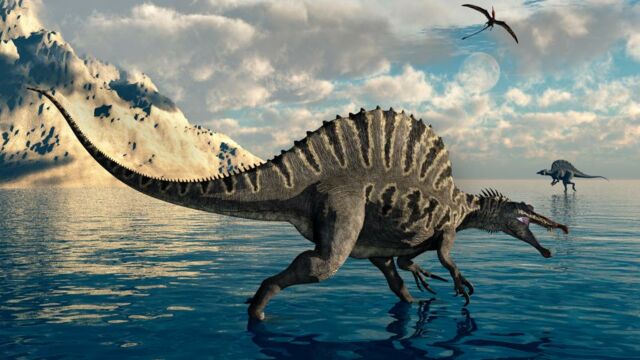Bones from a dinosaur that is believed to be Europe's largest dinosaur have been discovered on the Isle of Wight. The Isle of Wight is a British island situated in the English Channel. So what dinosaur have they uncovered?
Discover our latest podcast
Europe’s largest dinosaur
Palaeontologists at the University of Southampton have identified the bones as belonging to a creature that measured over 32 feet (10 metres) long and it lived 125 million years ago as reported by the BBC.
The remains belong to a two-legged, crocodile-faced, predatory spinosaurid dinosaur. Chris Baker, a PhD student who led the research said it was a ‘huge animal’.
He added:
Judging from some of the dimensions, it appears to represent one of the largest predatory dinosaurs ever found in Europe - maybe even the biggest yet known.
The remains
The remains that were discovered include vertebrae, parts of the pelvis and a limb bone according to The Guardian. This carnivore has been dubbed the ‘white rock spinosaurid’ due to the geological layer in which the bones were found.
Most dinosaurs are land-based, but spinosaurs spent a lot of their time near water and research suggests their diet was mainly fish-based, although researchers are unsure if the spinosaurs hunted fish or scavenged them after washing up on shore.
They also have not been able to give the creature a scientific name yet. Co-author of the research, Darren Naish, said:
Because it's only known from fragments at the moment, we haven't given it a formal scientific name. We hope that additional remains will turn up in time.
Read more:
⋙ 7500 years old ancient goddess relic discovered in Israel
⋙ A huge sinkhole with an entire ancient forest inside has been discovered
⋙ A prehistoric crystal may contain 'ancient life' inside and geologists want to open it















